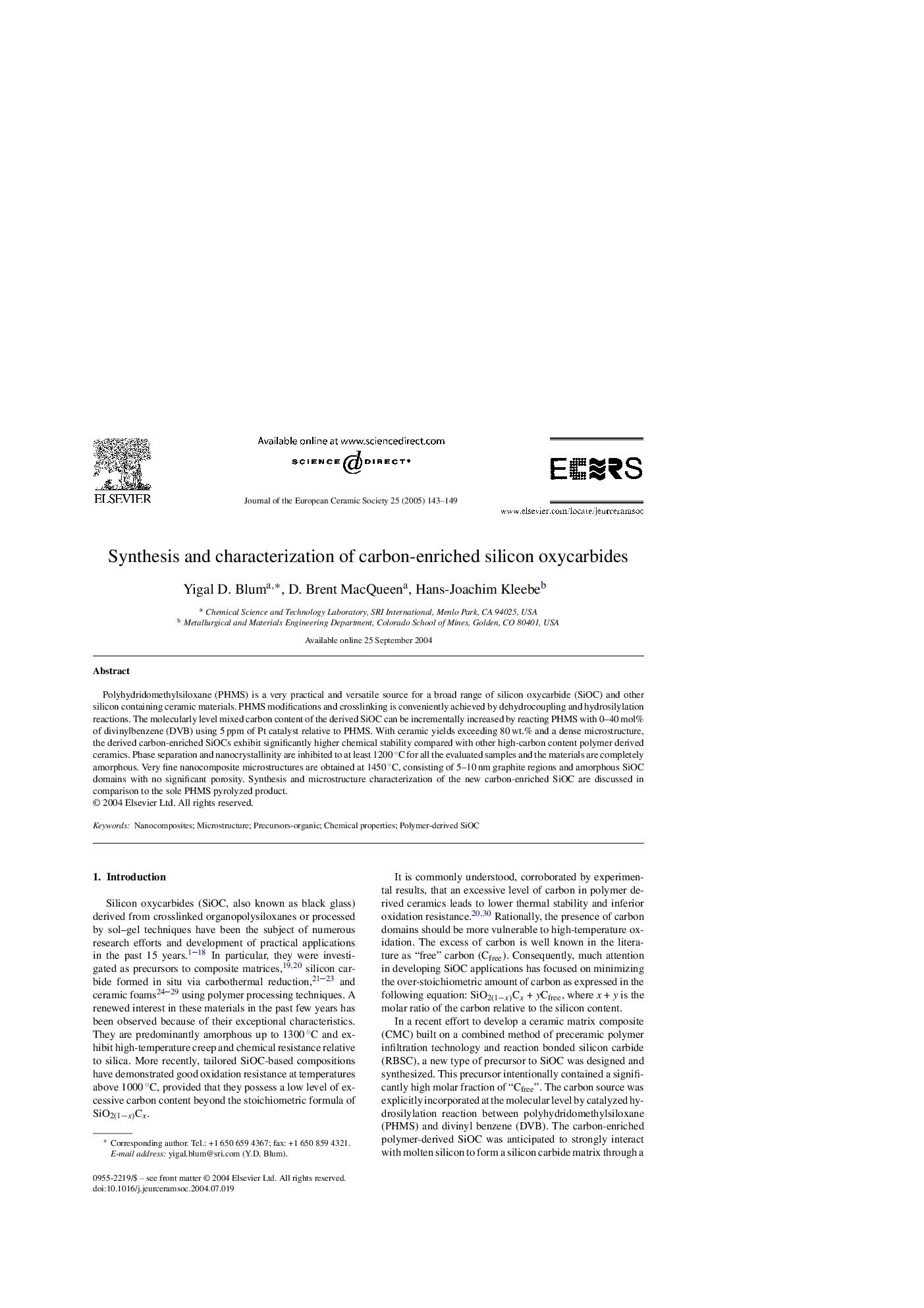| Article ID | Journal | Published Year | Pages | File Type |
|---|---|---|---|---|
| 9777944 | Journal of the European Ceramic Society | 2005 | 7 Pages |
Abstract
Polyhydridomethylsiloxane (PHMS) is a very practical and versatile source for a broad range of silicon oxycarbide (SiOC) and other silicon containing ceramic materials. PHMS modifications and crosslinking is conveniently achieved by dehydrocoupling and hydrosilylation reactions. The molecularly level mixed carbon content of the derived SiOC can be incrementally increased by reacting PHMS with 0-40 mol% of divinylbenzene (DVB) using 5 ppm of Pt catalyst relative to PHMS. With ceramic yields exceeding 80 wt.% and a dense microstructure, the derived carbon-enriched SiOCs exhibit significantly higher chemical stability compared with other high-carbon content polymer derived ceramics. Phase separation and nanocrystallinity are inhibited to at least 1200 °C for all the evaluated samples and the materials are completely amorphous. Very fine nanocomposite microstructures are obtained at 1450 °C, consisting of 5-10 nm graphite regions and amorphous SiOC domains with no significant porosity. Synthesis and microstructure characterization of the new carbon-enriched SiOC are discussed in comparison to the sole PHMS pyrolyzed product.
Related Topics
Physical Sciences and Engineering
Materials Science
Ceramics and Composites
Authors
Yigal D. Blum, D. Brent MacQueen, Hans-Joachim Kleebe,
